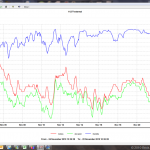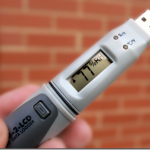As I was saying in my last article on this subject, anecdotal evidence for the benefits of PIV’s is good. When I returned to the bungalow in York, last Monday morning it was business as usual; “This is a different house” exclaimed my client “The stuffy feel has gone and you can just tell it’s […]
Relax, you’re at 3000 feet…
Saturday morning and I was sat on the hillside at Wether Fell, near Hawes, in the Yorkshire Dales. I was waiting, along with ten or so others, for the wind to pick up. I had my brand new paraglider laid out ready, and I was strapped in y harness. I’ve been paragliding for five years […]
Capillary active waterproofing? (for concrete).
Concrete is not generally waterproof. Pores and cracks within will let water through and the age old problem is how to stop it. Most methods involve sticking a layer of something other than concrete on one side of the slab/wall or another. Usually these are bitumen based, with little affinity for damp concrete. Applying them […]


